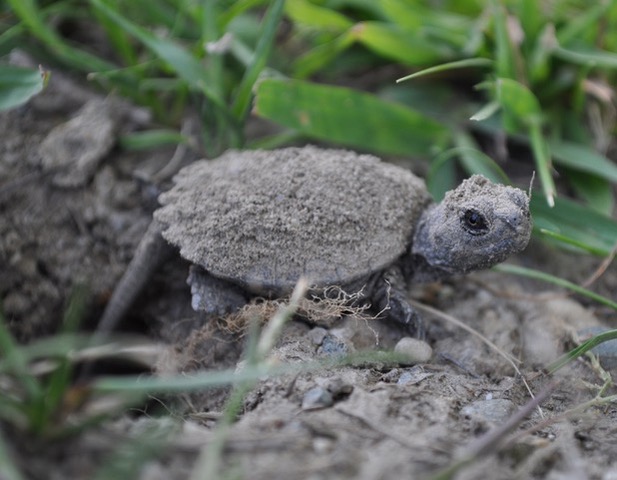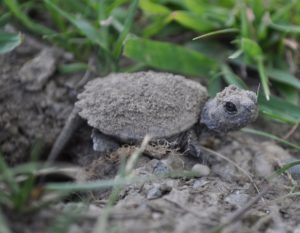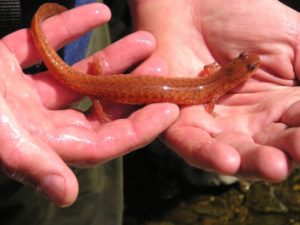
Herp Update: Fall turtles, Field trip with salamanders, Concert—September 19, 2022
Recent Herp Activity
We have received quite a few reports of baby Snapping Turtles emerging over the last week (see the Pat Perry photo). Snapping Turtles emerge from their underground nests in the fall of the same year that the eggs are laid. This is not the case with Painted Turtles. Painted Turtles hatch in the fall, but stay underground over the winter and emerge the following spring. A certain percentage of our Northern Map Turtles also overwinter in the ground, but all of our other turtle species normally emerge in the fall.
 Karen T reported young snappers emerging in Ferrisburgh on September 7, Jose M reported emerging snappers in St. Albans on September 10, and Kurt S reported emerging snappers in Hartland on September 12.
Karen T reported young snappers emerging in Ferrisburgh on September 7, Jose M reported emerging snappers in St. Albans on September 10, and Kurt S reported emerging snappers in Hartland on September 12.
Looking at past years, the earliest reports of emerging young snappers were August 29 in 2018 and 2020. The majority of emergence reports occur in September, but many snappers are still emerging in October and we have one report as late as November 4 in Shelburne (Clara S).
Field Trip
 This last Saturday we provided a field trip won by one of our contributors (Carol R of Middlebury). Kate Kelly and I took her and a group of her friends to the Brandon Gap area of Green Mountain National Forest to find our three saturated-soil salamanders (Northern Two-lined, Northern Dusky, and Spring), as well as whatever woodland amphibians we could find.
This last Saturday we provided a field trip won by one of our contributors (Carol R of Middlebury). Kate Kelly and I took her and a group of her friends to the Brandon Gap area of Green Mountain National Forest to find our three saturated-soil salamanders (Northern Two-lined, Northern Dusky, and Spring), as well as whatever woodland amphibians we could find.
Spring Salamander is always a crowd-pleaser. It is an impressive and striking salamander that reaches the size of our Spotted Salamanders (~ 8 inches), but with an orange-pink background color with black reticulations. They are a stream-based salamander that feeds on land on rainy nights. They are also an indicator of streams that are cold, clean, well-oxygenated, and lack sediment. In short, healthy streams. Since Spring Salamanders spend 3-4 years in their larval stage, they can’t survive in intermittent streams. They do best in streams that are small, but still permanent.
We found two adult Spring Salamanders and one larval Spring Salamander along with Northern Duskies, Northern Two-lineds, and Eastern Red-backeds Salamanders. Thanks to some beaver activity, we also found Green Frogs, larval Eastern Newts, and a single Pickerel Frog and American Toad. It was a fun trip. Thanks Carol!
Upcoming Fundraising Concert on October 1
 Our Patti Casey/ Colin McCaffrey fundraising concert here in Salisbury is less than two weeks away on Saturday, October 1, at 7 PM. We still have seats available!
Our Patti Casey/ Colin McCaffrey fundraising concert here in Salisbury is less than two weeks away on Saturday, October 1, at 7 PM. We still have seats available!
Come meet Team Herp, check out our new Mandibular Liberation bumper sticker, Herp Atlas hats, and updated herptile posters. Hear some great music, and support the Vermont Reptile and Amphibian Atlas, all in one great event. For more information or to buy advance tickets please visit:
https://www.simpletix.com/e/patti-casey-and-colin-mccaffrey-vermont-re-tickets-109660f
We hope to see you there.
Jim
“Anyone who believes that exponential growth can go on forever in a finite world is either a madman or an economist” (Kenneth Boulding, 1973)

